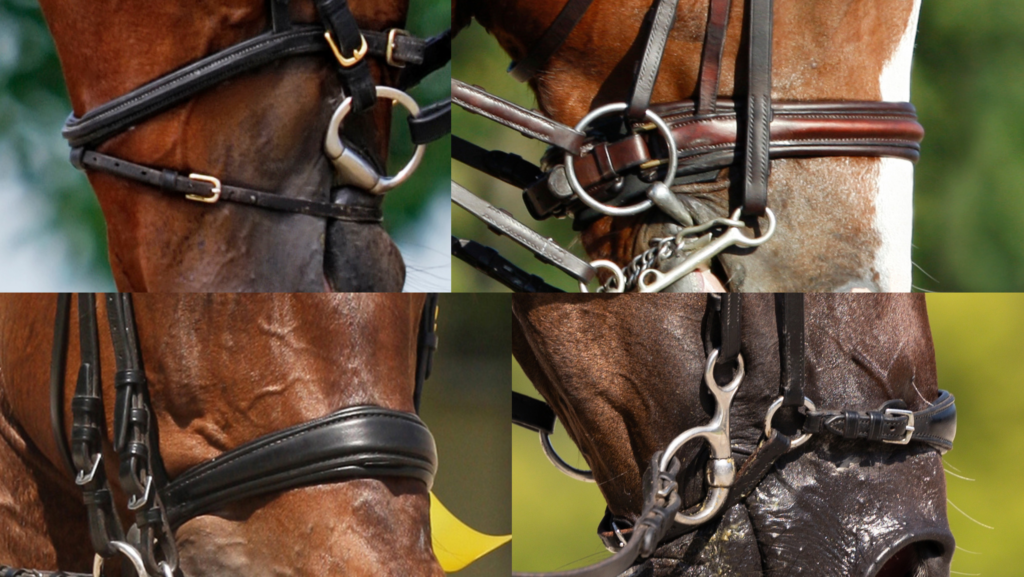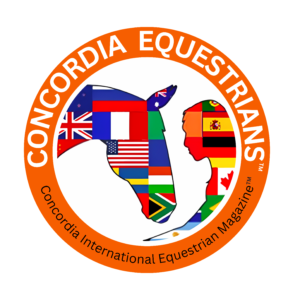Fédération Equestre Internationale (FEI) NOSEBAND RULES 2023
By Milly Shand
This article is published in Issue 7 of the CONCORDIA INTERNATIONAL EQUESTRIAN MAGAZINE – the current issue and archived issues are free to download and read online.

Research has shown that a large percentage of competition horses are ridden with too tight nosebands
“Noseband tightness was measured in 750 horses competing in dressage, eventing and performance hunter classes internationally. Forty-four per cent of nosebands were extremely tight. Only 7% were fitted to the recommended tightness level of the equivalent of two fingers. Tight nosebands may cause uncomfortable levels of pressure and pain in horses and are difficult to justify on welfare grounds.” (From “An investigation into noseband tightness levels on competition horses,” Orla Doherty MVB MSc PhD and Vincent Casey, University of Limerick and Professor Paul McGreevy BVSc, PhD FRCVS FRSN , University of New England (Australia).
The obvious concern is that tight nosebands can cause pain, distress and tissue damage. Equestrians and equine scientists have, for many years, called upon the FEI to change their rules to outlaw tight nosebands and to enforce tack checks that ensure that there is room for at least two fingers (measured with a standardised gauge) between the bony nasal ridge of the face and the noseband.
The response from the FEI has been seen by many as a cynical ploy to appease critics of tight-nosebands and pull the wool over the eyes of an unsuspecting public. In dressage, they have introduced a protocol that states that ‘tightness check must be done with the steward’s index finger between the horse’s cheek and the noseband’, but due to the conformation of the equine jaw, there is a hollow at either side of the face and therefore there will always be space between the horse’s cheek and noseband! (The maxillary cheek teeth rows (upper jaw) are approximately 25% wider apart than the mandibular cheek teeth rows (lower jaw) – this feature is called anisognathia).
As the International Society for Equitation Science (ISES) states in its position statement on restrictive nosebands:
‘Since 2016, FEI tack stewards have been advised to conduct a noseband tightness check by introducing an index finger between the horse’s cheek and the noseband. However, research has shown that an extremely tight noseband will still allow a finger or measuring device to be introduced easily between the horse’s cheek and the noseband due to the much flatter and in places, concave or hollow, shape of the horse’s face at the side (Doherty et al. 2017).’
FEI rules for (only) dressage stipulate that ‘a noseband may never be so tightly fixed that it causes harm to the horse’ but many scientists and equestrians agree that the FEI are doing little or nothing to uphold this rule.
The focus on tight nosebands should not however be restricted to dressage alone. For some reason, show jumping, eventing and other FEI sports have yet to be noticed. They have no restrictions on noseband tightness and the competition rules merely say that ‘the Ground Jury has the right, based on veterinary advice, to forbid the use of a bit or a noseband that may cause injury to a horse’. This is a rather vague rule that considers only obvious mouth and noseband injuries and takes no account of a horse’s pain or distress – something that is unlikely to be visible to the naked eye without closer inspection.
This article is published in Issue 7 of the CONCORDIA INTERNATIONAL EQUESTRIAN MAGAZINE – the current issue and archived issues are free to download and read online.
